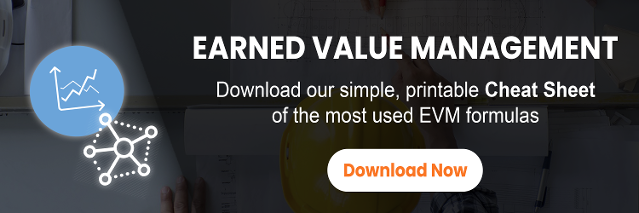accurately measuring the progress of a project is always a challenge. there are many factors to account for in a progress update – type of measurement, accuracy of the data, and the system of record are all important factor in accurate progress measurements.
software packages like primavera p6 don’t always help us out. sure there a 3 choices for percent complete types, but how do we decide which one works best and under which conditions?
inaccurate progress will foil your ability to spot early warning signs of trouble ahead. so to avoid that, here are 6 common methods for measuring project progress that will help you best measure performance and work completion. the methods below are summarized from the “project control: integrating cost and schedule in construction,” textbook by wayne del pico.
6 ways to measure project progress
1. units completed
the units completed lends itself well to tracking tasks that are done repeatedly, where each iteration can easily be measured. usually a task that is done repeatedly tends to take about the same amount of time, 世界杯时间比赛时间 and effort, so tracking the units completed works well here. a simple example could be installing standard light fixtures. each fixture takes roughly the same amount of time. if we had 100 fixtures to install then we can simply count the units installed. in this case, there are no subjective experience-based judgement involved.
2. incremental milestones
also known as the ‘steps’ method, the incremental milestones method is predominantly used for cost accounts that involve subtasks that need to be completed in an orderly fashion. an example of this technique is the forming and placing of a concrete foundation wall – laying the foundation wall on footings, erecting inside wall panels and brace, setting horizontal and vertical rebar in formwork and so forth needs to be done in sequence to complete the task appropriately.
so how do you calculate this data? the calculation is built on each single step and the budgeted amount of time (labour hours) that is needed to complete the task by the construction crew. as each step is completed, they are documented as a mini-milestone which represents a percentage of the total installation process. the percentage given for each sub-task can vary based on the project. this progress is usually agreed on to be used as a measuring tool beforehand. a good way to implement this method in primavera p6 is using activity steps.
3. start/finish
this method is only focused on capturing the starting point and the finishing point of the task and nothing in between. it’s best for tasks that are short in duration. you would implement this method if the tasks work estimations are not available or if the percent complete progress data is too difficult to collect.
“classic examples include testing services such as load test on electric panels, flushing and cleaning of piping, and similar tasks.”1
using the start/finish technique, we earn a percentage of progress when the task starts and the other half is earned once the task is complete. these percentages are determined by the owner and contractor of the project.
often, companies agree to use the standard 50/50 rule or other rules:
- 50/50 rule – once started, the task is marked as 50% complete and the balance is earned at final completion of the work.
- 20/80 rule – used to track higher value tasks that takes a longer time to reach completion.
- 0/100 rule – this rule illustrates that once 100 percent of the task is completed, only then will the value be earned. examples of this are testing or experimental tasks since you cannot get results until the task is completed.
4. cost ratio
the cost ratio method is usually implemented on a project that has tasks that tend to occur over a long phase or the entire project. often used for overhead costs, this technique is measured based on the budgeted allocation of dollars vs. the labour hours of production. this method gives the contractor the ability to earn value that is equal to the overall percent of project completion.
“for example,[] if the overall progress of the project was determined to be 42 percent, then the contractor would have earned 42 percent of the overhead and fees.”1
5. experience/opinion
unlike the methods above that rely on definitive data, this method relies on the experience and subjectivity of the project manager. this technique is used for tasks such as de-watering or frost removal/protection. it’s not usually recommended and tends to be seen as the last resort because each individual experiences and opinions vary from one another and can cause conflict between owners, contractors, and architects.
6. weighted or equivalent units
this method was highlighted as the best technique in the text and is the one that requires more effort, but also extends to a wider data range. the tasks that are being calculated tend to occur over a longer duration time and includes multiple sub-tasks, where sub-tasks can have different units of measurements.
the example used to illustrate this method is building a structural steel package. in order to complete this project it requires various units, labour hours, 世界杯时间比赛时间 and sub-tasks. so to calculate the sub-tasks, it’s weighted on the estimated level of efforts in labour hours or by monetary value that is particular to each sub-task. once the weighted value is determined, it’s converted to reflect that value in units of measure specific to the task – and for this example, the units of measure would be tons.
so once each sub-task has been completed, the weighted tons (units of measure) is then converted to the equivalent units of percentage complete of the overall project.
these 6 methods for measuring project progress are commonly used in construction project management and filter into a process of determining a percentage complete for the project as a whole using earned value management.
which of these methods do you use the most on your projects?
1source: del pico, wayne j. (2013) project control: integrating cost and schedule in construction. hoboken, new jersey: john wiley & sons, inc.



